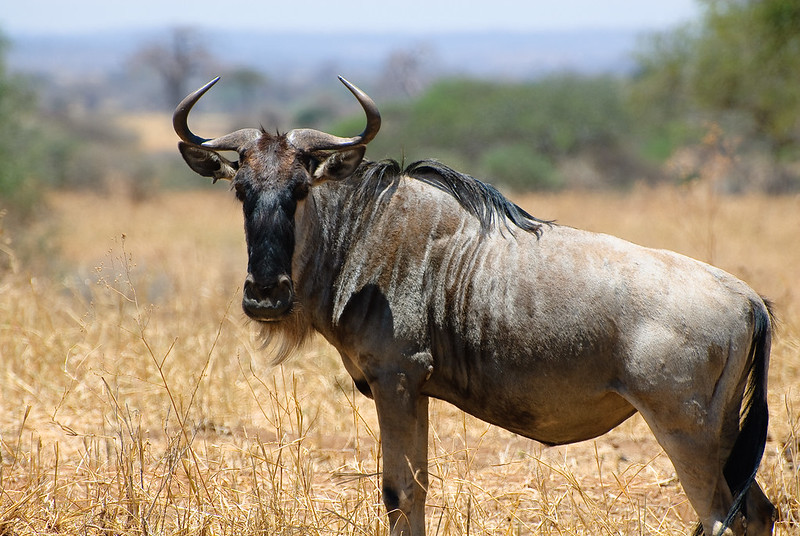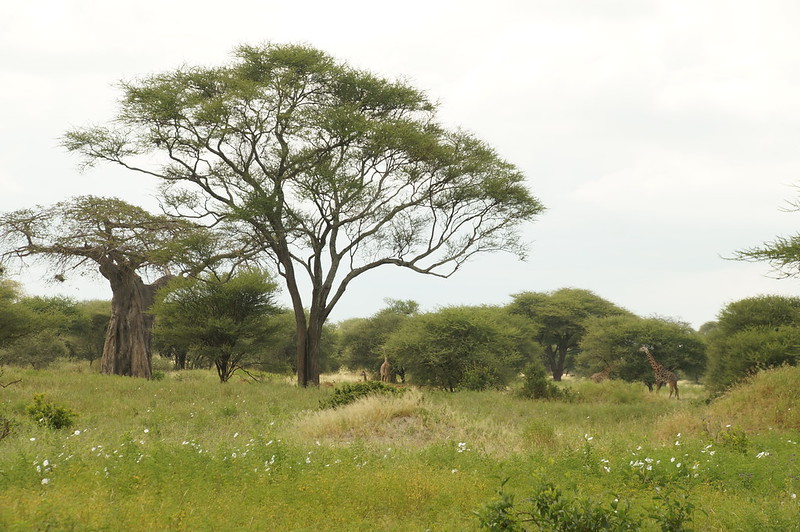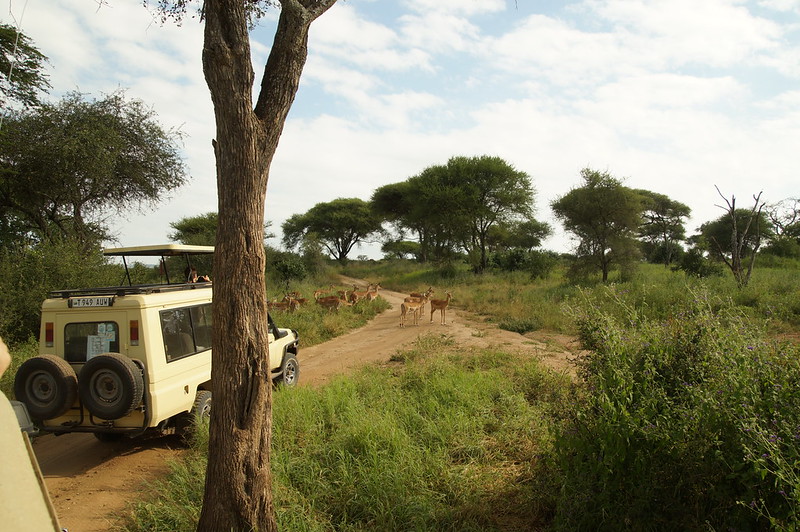Tarangire National Park – A Wildlife Wonder
Nestled 120 kilometers south of the bustling town of Arusha, along The Great North Road highway, Tarangire National Park stands as a jewel in Tanzania’s crown of natural treasures. While it is one of the smaller national parks in the country at 2,850 square kilometers, its compact size belies the astonishing biodiversity and captivating landscapes it offers. Renowned for its accessibility and day trip opportunities, Tarangire beckons explorers to immerse themselves in its unique blend of flora and fauna.
The park’s natural features are inextricably linked to the remarkable variety of wildlife that thrives here. Sprawling across vast flood plains and adorned with numerous acacia tree species, Tarangire’s landscape also features scattered baobabs, tamarind trees, and the iconic sausage trees. However, the lifeblood of the park is the Tarangire River, from which it derives its name. This river is the sole source of permanent water in the region, providing a lifeline for the park’s thriving ecosystem.
Tarangire’s Spectacular Wildlife
The heartbeat of Tarangire National Park is its ever-changing cast of wildlife, each species intricately connected to the seasonal rhythm of water availability. As the Maasai Steppes dry up following the long rains’ conclusion in June, a magnificent phenomenon unfolds. Migratory animals, driven by their primal need for water, return in astonishing numbers to the Tarangire River. During this period, Tarangire National Park boasts the second-highest wildlife concentration in Tanzania, surpassed only by the famed Ngorongoro Conservation Area. This spectacular wildlife migration occurs between June and October, marking the peak season for game viewing in Tarangire.
Among the park’s most common residents are the elegant zebras, formidable wildebeest, regal lions, elusive leopards, stately waterbucks, towering giraffes, swift-footed gazelles, graceful impalas, the distinctive gerenuk, and the striking lesser kudu. Adding to this vibrant tapestry of wildlife are the striking fringe-eared oryx, a rare sight in Northern Tanzania. Adventurous visitors might even be rewarded with a glimpse of the elusive tree-climbing python, a creature for which Tarangire is renowned, or the rare greater kudu and roan antelope, which further enrich the park’s biodiversity.
A Birder’s Paradise and Unique Features
While Tarangire National Park is celebrated for its terrestrial wonders, it is equally renowned as a haven for avian enthusiasts. The park’s skies and landscapes come alive with the presence of over 550 recorded bird species, making it a veritable paradise for birdwatchers. From magnificent raptors to melodious songbirds, Tarangire presents a captivating showcase of avian life. Each winged inhabitant adds its unique note to the park’s symphony, creating an audible masterpiece that harmonizes with the beauty of the natural world.
Beyond its charismatic wildlife and avian diversity, Tarangire National Park offers additional intriguing features. The park is renowned for its large population of African elephants, making it one of the best places in East Africa to observe these gentle giants in their natural habitat. Furthermore, Tarangire is a sanctuary for tree-climbing lions, a phenomenon rarely seen elsewhere in Tanzania. These lions are known for their unique behavior of ascending trees to escape the heat and avoid bothersome insects.
In Tarangire, nature’s grandeur unfolds against a backdrop of sweeping vistas and untamed landscapes. Whether you’re a seasoned adventurer or a lover of serene beauty, this national park invites you to delve deeper into its diverse and ever-surprising charms. The rhythmic pulse of life, the mighty river, the sprawling grasslands, and the remarkable array of creatures make Tarangire National Park a captivating destination for those seeking to connect with the untamed soul of Africa. A visit to Tarangire promises not only cherished memories but also a profound appreciation for the intricate web of life that thrives within this remarkable wilderness.


